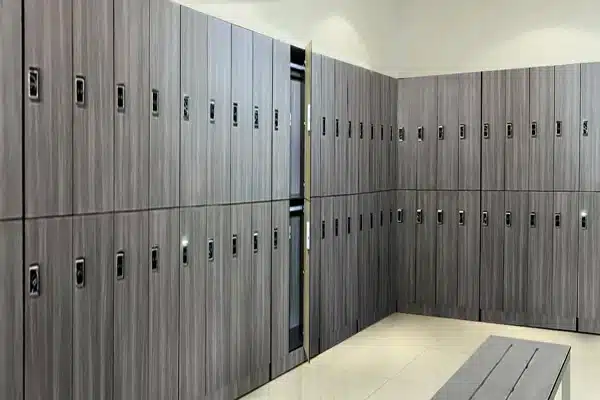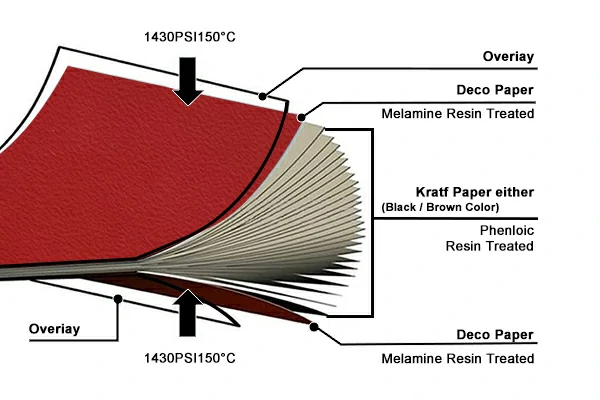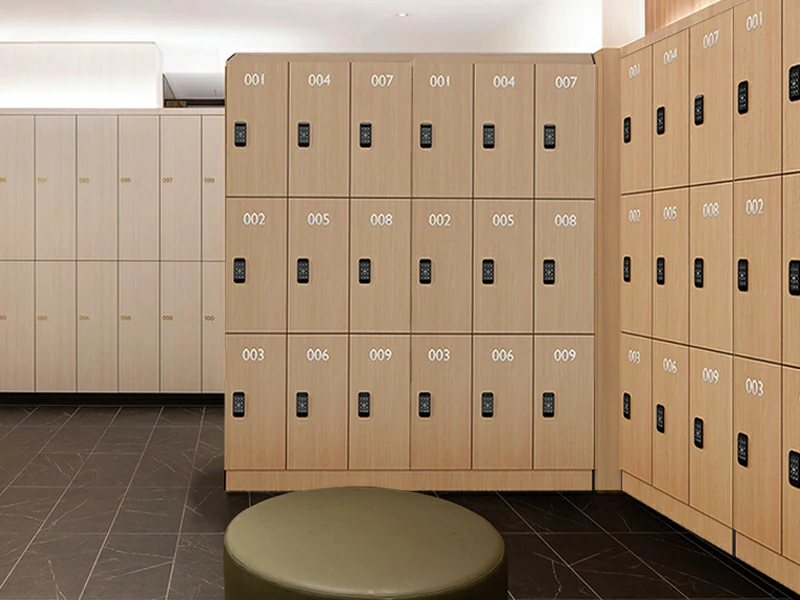HPL lockers have become a non-negotiable fixture in factories and warehouses. But what makes them so essential? Let’s break it down.
HPL (High-Pressure Laminate) lockers are critical for industrial safety because they combine durability, chemical resistance, and fire retardancy—key features that help facilities meet strict compliance standards while protecting workers and equipment.

From chemical spills to heavy impacts, industrial environments demand lockers that won’t fail under pressure. Here’s why HPL stands out as the go-to material for tough workplaces.
What is HPL Lockers?
Ever wondered what makes HPL lockers different from standard metal or wooden ones? The secret lies in their construction.
HPL lockers are made by fusing layers of resin-soaked kraft paper under high heat and pressure, creating an ultra-durable surface that resists scratches, moisture, and chemicals—perfect for harsh industrial conditions.

How HPL Lockers Are Made
The manufacturing process gives HPL its standout properties:
| Layer | Material | Function |
|---|---|---|
| Top | Melamine resin | Provides scratch and stain resistance |
| Core | Kraft paper + resin | Adds strength and impact resistance |
| Bottom | Balancing layer | Prevents warping |
Unlike painted steel or particleboard, HPL won’t peel or corrode. I’ve supplied these lockers to a food processing plant in Singapore, where they’ve endured daily sanitization for 5 years without damage.
Why Are Lockers Used in Industrial Settings?
Lockers might seem like a simple storage solution, but in factories, they’re a safety necessity.
Industrial lockers secure tools, PPE, and hazardous materials, reducing workplace accidents and ensuring compliance with OSHA and ISO standards for organized, contamination-free storage.

Key Industrial Locker Functions
Here’s how they mitigate risks:
| Risk | How HPL Lockers Help | Example |
|---|---|---|
| Chemical exposure | Non-porous surface blocks absorption | A Dubai client uses them for acid storage |
| Fire hazards | Fire-rated options slow flame spread | Required in Australian mining sites |
| Theft | Reinforced locks protect valuables | Used in Spanish auto plants for tools |
One of my clients in Saudi Arabia avoided a major OSHA violation by switching to HPL lockers for flammable-material storage—their old metal lockers were rusting and leaking.
What is HPL For?
HPL isn’t just about durability; it’s engineered for industrial-specific challenges.
HPL sheets are designed to withstand extreme conditions—from -30°C to 150°C—while remaining hygienic and easy to clean, making them ideal for labs, factories, and food facilities.

HPL vs. Alternatives: A Comparison
| Feature | HPL | Painted Steel | Plywood |
|---|---|---|---|
| Chemical resistance | ✔️ (no corrosion) | ✖️ (peels) | ✖️ (absorbs spills) |
| Fire rating | Up to Class B | Varies | Poor |
| Lifespan | 10+ years | 3–5 years | 2–3 years |
A Canadian pharmaceutical client saved 60% on maintenance by switching from stainless steel to HPL—their previous lockers required weekly repainting due to disinfectant damage.
The Compliance Advantage
Regulations like OSHA 1910.106 and ISO 45001 aren’t just red tape; they save lives. HPL lockers help facilities check these boxes effortlessly.
HPL lockers meet global safety standards with features like flame retardancy (ASTM E84 Class A), anti-microbial coatings (ISO 22196), and structural stability (EN 14470-1).

Compliance Checklist for Industrial Lockers
| Standard | Requirement | How HPL Delivers |
|---|---|---|
| OSHA 1910.106 | Safe flammable storage | Non-sparking, leak-proof construction |
| EPA 40 CFR | Chemical containment | Impermeable surface |
| NFPA 101 | Fire safety | 30+ minute fire resistance |
When a German automotive plant faced an audit, our HPL lockers helped them pass thanks to integrated spill trays and documented fire ratings.
Conclusion
HPL lockers are the industrial gold standard for a reason—they merge safety, compliance, and cost-efficiency into one solution.
What’s your experience with HPL Lockers in Industrial Settings? Share your thoughts in the comments below!

